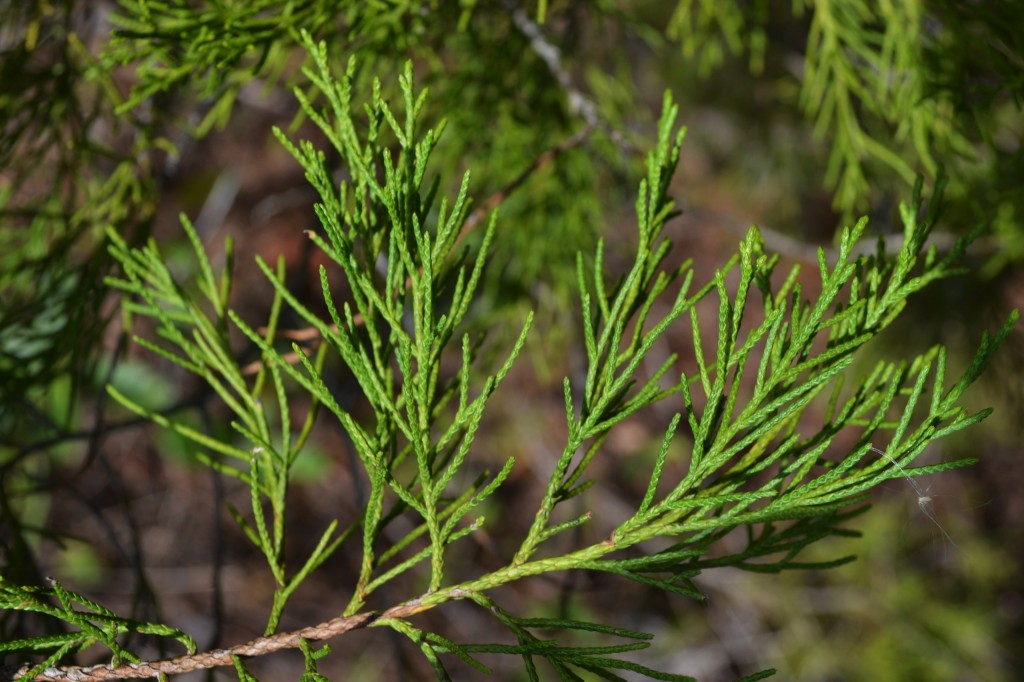Southern Red Cedar
Juniperus silicicola
Plant Family: Cupressaceae
Leaf Description: Small and scaly on older growth, overlapping and hugging the twigs, dark green; short and needle-like on younger growth, bright green.
Bark Description: Gray to reddish brown, peeling in long strips.
Cones: Dioecious, female cones grayish blue, waxy, small, only 5 mm in diameter; male cones golden brown; present fall to winter and may stay on the tree for several months.
Habitat: Varied; this native pioneer species may be found in wet or dry habitats, including hammock edges, abandoned fields, coastal thickets, and disturbed sites.
Growth Form: Small to medium-sized densely branched tree with a pyramidal form.
Similar Species: The closely related Eastern Red Cedar (Juniperus virginiana) is found in northern Florida and has slightly larger cones. Some authorities consider Southern Red Cedar and Eastern Red Cedar to be varieties of the same species.
Comments: Southern Red Cedar is not closely related to the true cedars of the genus Cedrus, which are large trees that inhabit mountains of the Mediterranean region, with one species found in the Himalayas.

